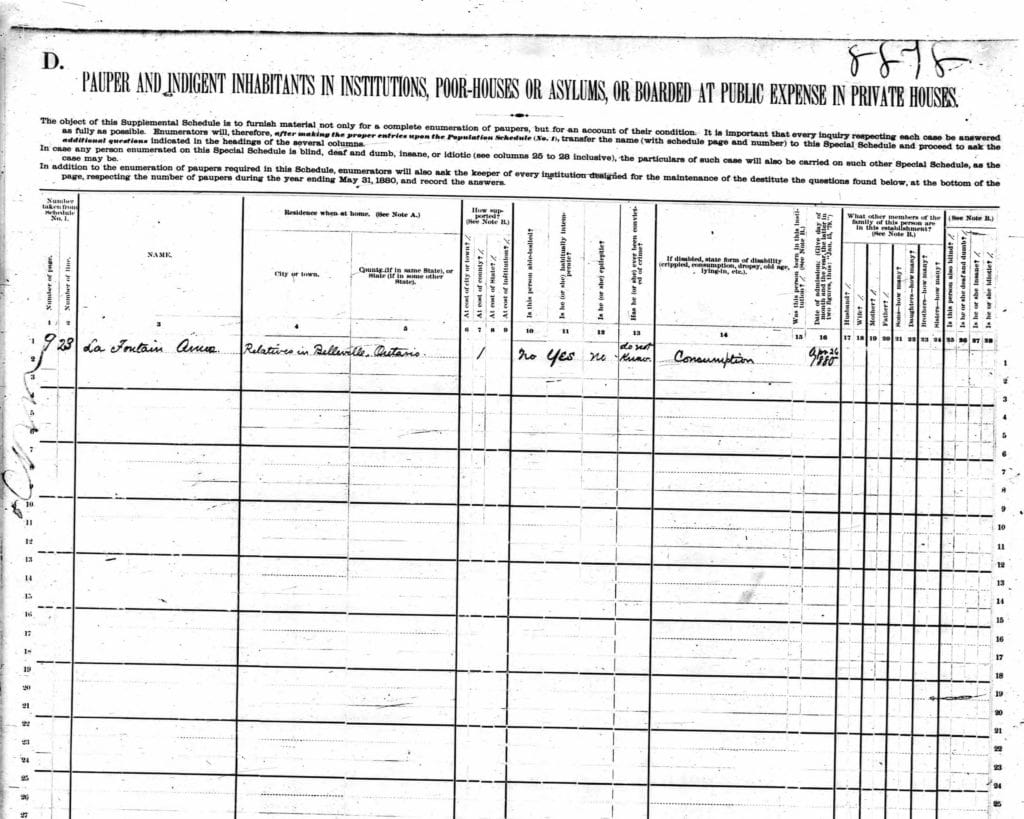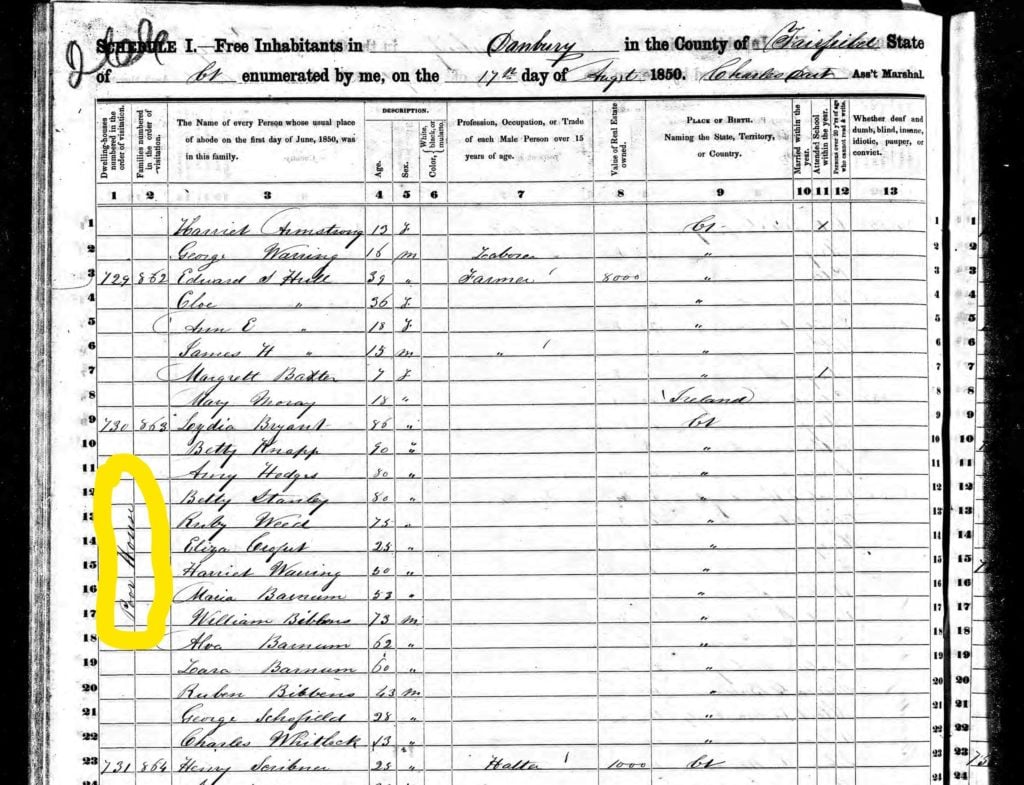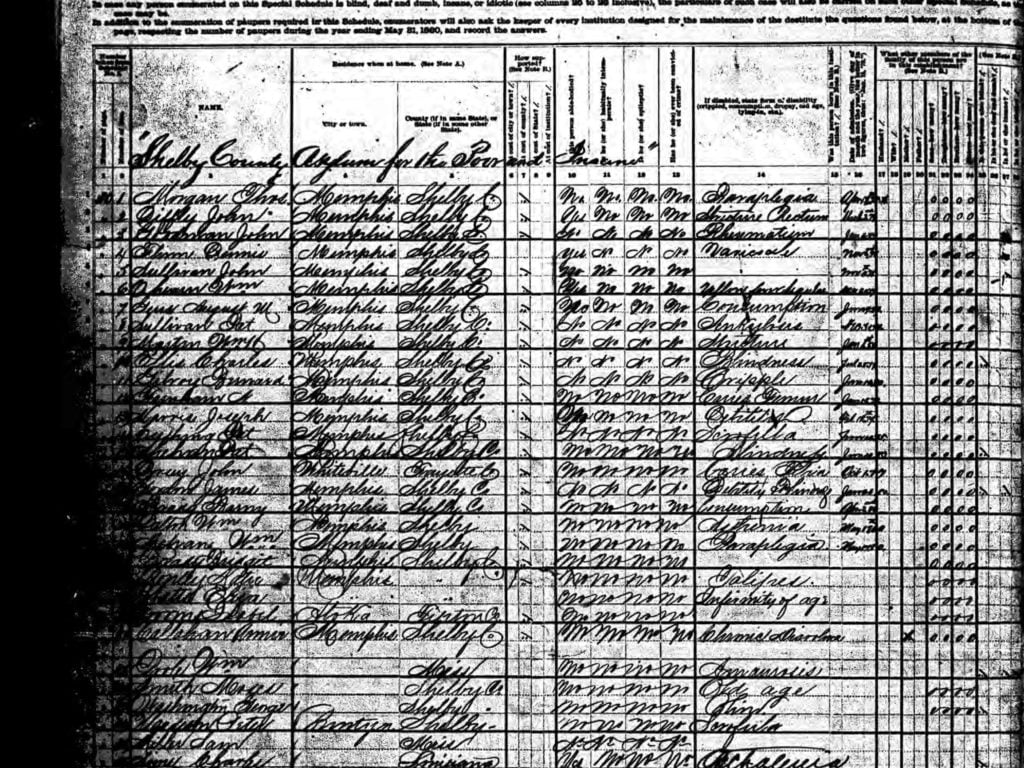By Janet Meydam
Have you ever said this? “Don’t spend so much. You’ll land us in the poor house!” This old saying has a basis in reality, because the poor house was a real place. Back before the days of welfare, food stamps, and long-term disability insurance, people who were unable to support themselves financially sometimes had to live in these places. This article will explain what poor houses and poor farms were and how to find your ancestors who may have lived there.
What Were Poor Houses and Poor Farms?
A poor house was a home where a municipality housed everyone in an area who had no means of financial support. Counties in the United States often used self-sustaining farms used for this purpose, hence the name poor farm. Other names for poor houses include almshouse and workhouse.
Poor houses and poor farms originated in England, where a law passed in 1601 mandated that local towns and villages were responsible for caring for their own poor. This practice was continued in the United States. Municipalities began by providing what was called “outdoor relief,” where funds were provided to poor individuals similar to our modern-day welfare system.
For those poor people who had no place to live, a town would contract with private individuals to provide a home, with expenses and salary paid by the town. Here is an example from the 1880 Schedules of Defective, Dependent and Delinquent Classes (read more about this census here), showing an individual housed in a private home at public expense in Barber County, Kansas.
When an area had more than a handful of individuals to support, a poor house was established. Some poor houses were small, similar to boarding houses. This image of the 1850 United States Federal Census shows a poor house in Danbury Connecticut with 14 residents.
Many poor houses, however, became large institutions housing dozens of people. The 1900 United States Federal Census enumeration for the Dane County Wisconsin Poor House lists the superintendent and his family, 5 employees, and 69 inmates.
The preferred model of supporting the poor in the United States became the poor farm because it was more cost effective. Poor farms also provided work for the people who lived there, as well as means for convicts to work off fines and settlements.
People who were sent to live at poor houses and poor farms were called inmates or paupers. These derogatory terms were used on purpose, as the prevalent view was that people who went to poor farms were morally corrupt. While some poor farm inmates ended up there due to their own actions, the majority of poor house residents were elderly or disabled.
The 1880 U.S. Federal Census Schedules of Defective, Dependent and Delinquent Classes lists inmates at the Shelby County, Tennessee Asylum for the Poor and Insane. The census listing below shows that many of the inmates had conditions like rheumatism, paraplegia, blindness, and old age.
Poor houses and poor farms began disappearing after the Social Security Act of 1935 was passed, with most of them disbanded by the early 1950s.
How to Find Out if Your Ancestor Ended Up On the Poor Farm
If you suspect that one of your ancestors may have had to go to a poor house or poor farm, there are several ways you can search for this information to add to your genealogy research.
1. Look on the U.S. Federal Census for the poor farm in the county where your ancestor lived. Most counties had a poor farm or poor house. They were listed under several different terms, including county farm, county home, and county asylum. Don’t let these terms deter you, because often people who were poor or disabled were housed on the same property with people who were mentally ill, developmentally disabled, substance abusers, or prisoners. The 1880 Shelby County example above shows a mixed population like this. For help with finding the right census year to search see this guide.
2. Search special schedules and poor house admissions lists from the city or county where your ancestor lived. This state by state guide to free online records can help you locate potential databases based on where your ancestors lived.
Here is a page from Chester County Poor House Admissions, 1800 – 1858, available on the Chester County, Pennsylvania website.
The 1880 U.S. Federal Census Schedules of Defective, Dependent and Delinquent Classes includes lists of people who were supported by public funds in 1880. Get more details about that census and how to access it here.
3. Search through library archive sites such as Digital Public Library of America or Internet Archive. A wide variety of genealogy records are available on these sites and these holdings may include poor house and poor farm admissions lists, financial accounts, property inventories, employee records, records of convicts working to pay fines, and cemetery records. Here is a page from the Travis County, Texas Poor Farm Record, 1890 – 1900.
The cost of accessing these family history records is dependent on the archive, but many of them are available online for free. Good luck with your research.
Janet Meydam is a freelance writer who has over 40 years of experience in genealogy as a hobby. Her knowledge includes researching many different records from the United States, Germany and Poland. She is also a co-author of her parents’ family history book “I Come from a Long Line of Dilleys.” Janet works as an occupational therapist. She and her husband Tim have three adult children and live in Wisconsin.
Image: Lake County Poor Farm. Image from page 103 of “History and directory of Newton and Ransom townships, Lackawanna County, Pennsylvania;” (1912). Internet Archive on Flickr







In Maine, USA the city cemeteries had a section in the back for “paupers” all with just a marker, no name of information.
I know in Wood County WV we have a paupers cemetery. I think residents from poor farm were buried there as well as folks that didn’t have family to take care of burial expenses.
Tenho interesse em conhecer à origem dos meus antepassado Tolentino, sei que vieram da Itália, qual Cidade eles moraram,
como chegaram no Brasil e porque vieram.
Tenho enteresse em conhecer à origem dos meus antepassado Tolentino, sei que vieram da Italia, com Cidade.
I have a great great grandfather who was in a poor house. I have Always wondered where did they bury the inmates? Did they have a poor persons cemetery or were they buried elsewhere. And how would I find This out?